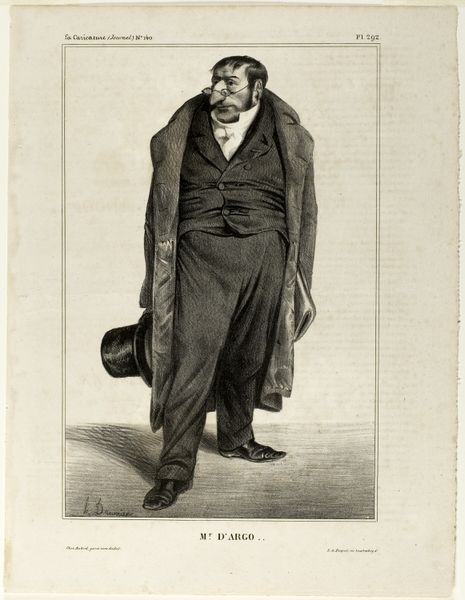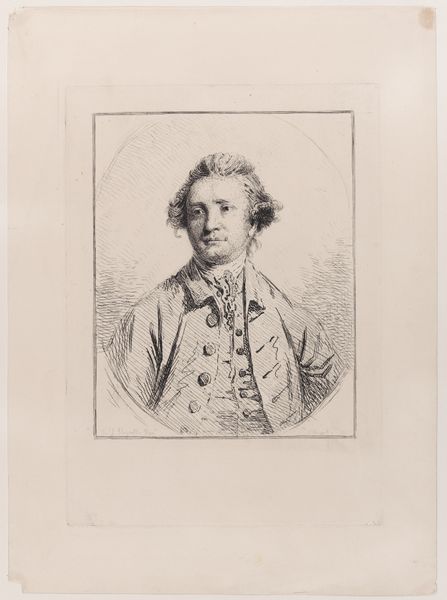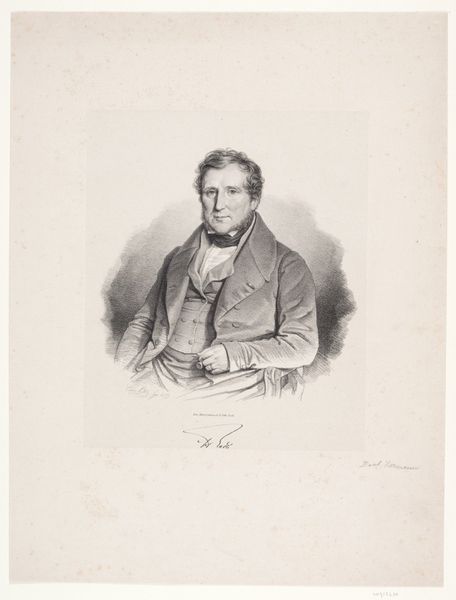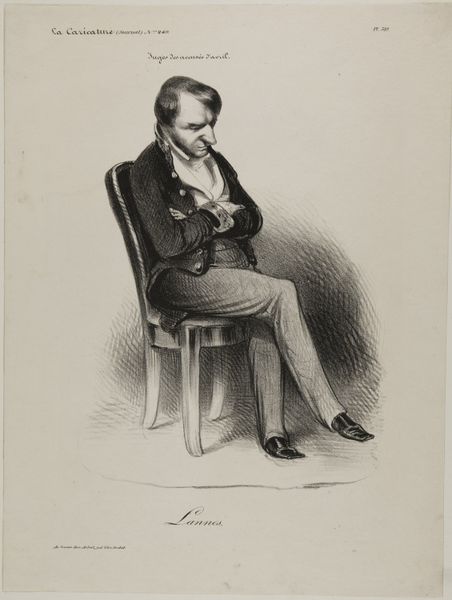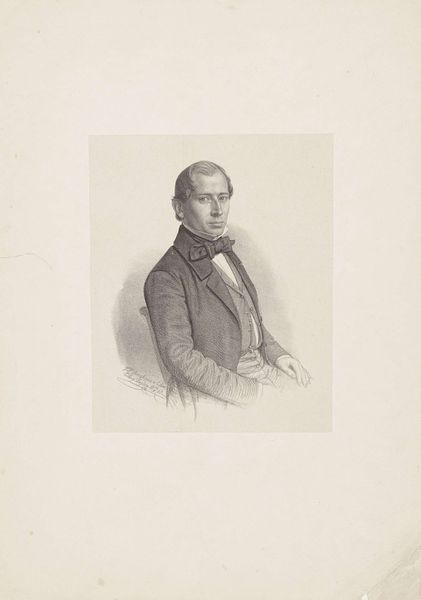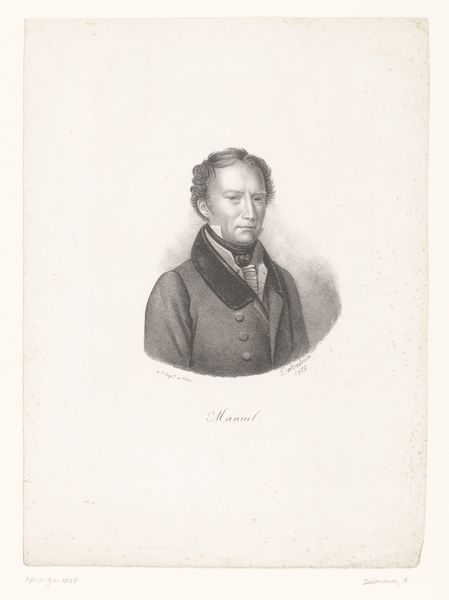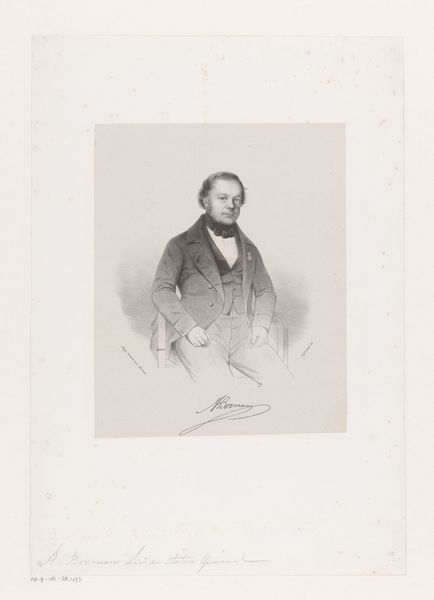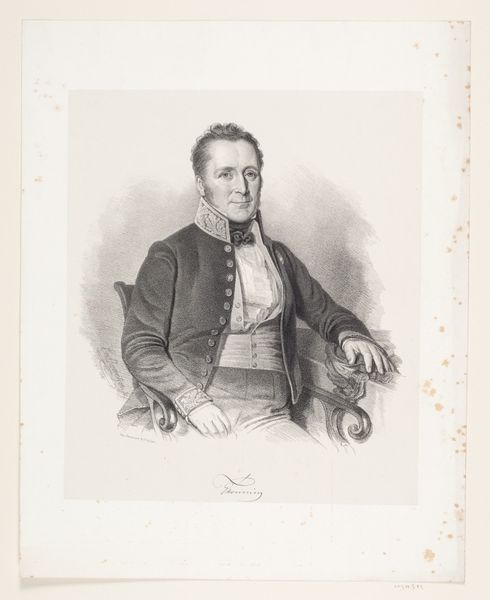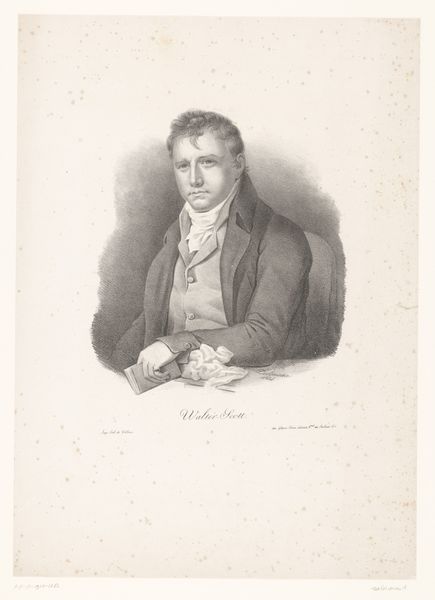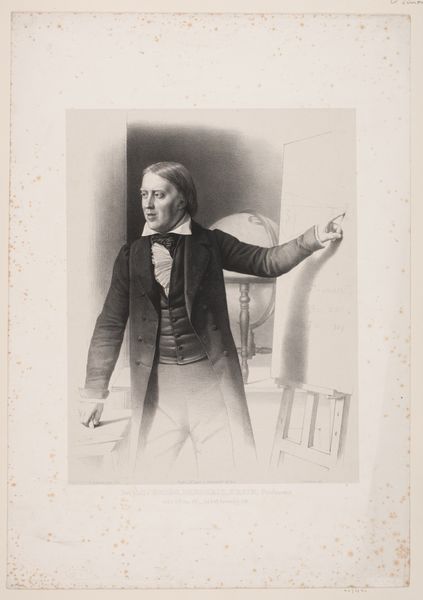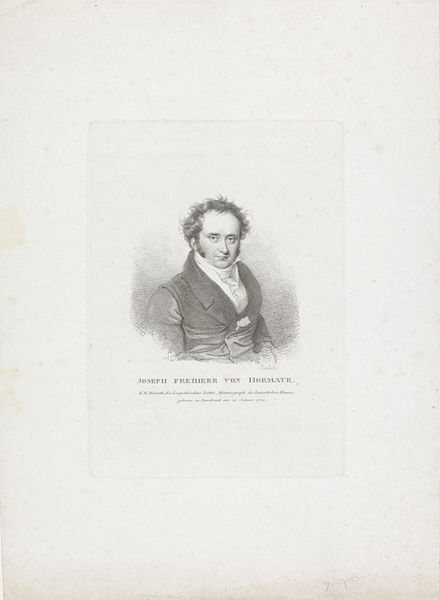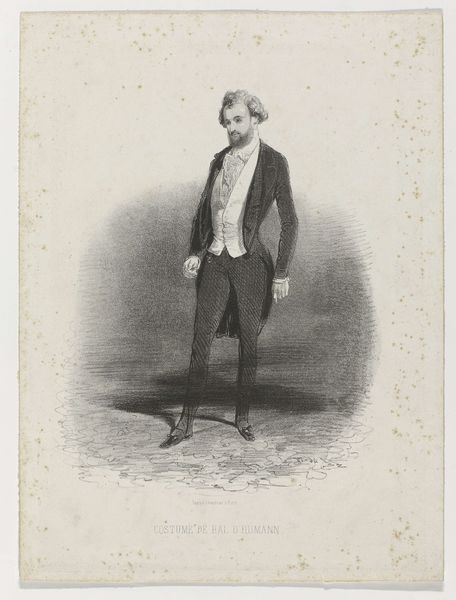
lithograph, print
#
portrait
#
lithograph
# print
#
romanticism
#
portrait drawing
#
genre-painting
Dimensions: 323 mm (height) x 240 mm (width) (bladmaal)
Curator: Emil Ditlev Bærentzen’s 1833 lithograph, “J.P. Tønder,” at the SMK, offers a fascinating glimpse into Danish Romanticism through the genre of portraiture. Editor: It's a remarkably subtle print. The man's casual stance, caught almost mid-stride, evokes a sense of immediacy and realism. It’s all very carefully rendered. Curator: Absolutely. The Romantic period in Denmark grappled with burgeoning national identity. It’s relevant that Bærentzen's portrait here is concerned with ideas of authenticity, looking back at traditions. The door itself could be interpreted as representing the opening of possibilities and the promise of a bright, yet undetermined future for the subject of the work. What is especially interesting is the work that must have gone into the print itself. Editor: Precisely. This is a lithograph. One must imagine Bærentzen’s labor—grinding the limestone, carefully drawing with a greasy crayon. The transfer of the image to paper speaks to the mechanics and skill needed. And how that labor and material transformation impacts the meaning. Curator: Exactly, which tells us something important about Danish culture at the time and speaks to class tensions and a nascent middle class trying to claim a different form of representation. This echoes broader European social movements advocating for recognition and reform, challenging the aristocracy’s dominance in portraiture and image making. The simplicity underscores that push for different means of image distribution. Editor: Yes. The mass reproducibility of lithography would have made images and artistic representation more accessible. The social impact of printmaking here moves art towards the people. How the industrial intersects with artistry. Curator: I concur. What strikes me, though, is the tension between Romanticism’s yearning for the past and lithography’s forward-looking implications for art production and distribution. This intersection complicates any singular interpretation, offering a glimpse into Denmark’s evolving societal fabric. Editor: I hadn’t thought of that before! This really highlights how material and artistic practices are embedded in societal changes and that it offers different ways to consider Denmark's historical narratives.
Comments
No comments
Be the first to comment and join the conversation on the ultimate creative platform.
